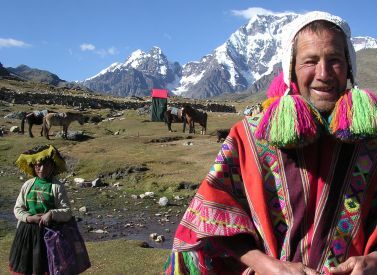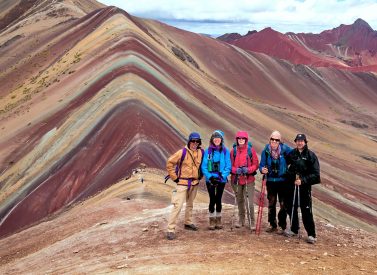Surprising Facts About Rainbow Mountain, Near Cusco, Peru
 by Tom Shearman on 14th June, 2022
by Tom Shearman on 14th June, 2022
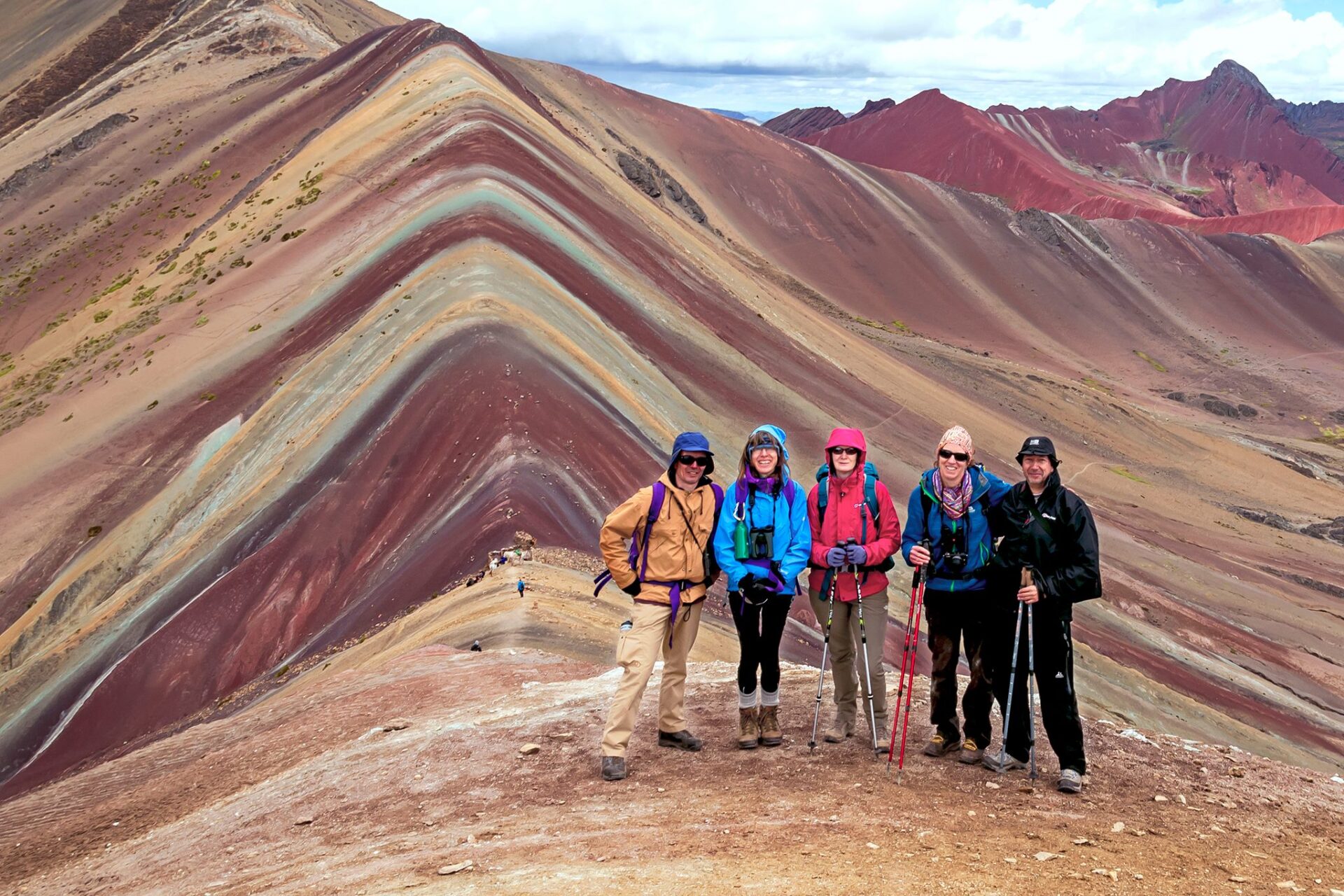
Photo by Yepo
One of Peru’s must-see travel highlights is the stunningly vibrant multi-coloured Rainbow Mountain near Cusco.
It’s easy for visitors to see why at such a stunning site, high in the Peruvian Andes. Plump purple, arctic blues and lemon yellows weave over the shoulders of Vinicunca, its Quechua name, which means coloured mountain. This rich natural tapestry is accessible in just a day from Cusco, enhancing its popularity.
Let’s take a closer look at Rainbow Mountain, the montaña de siete colores in Spanish, and uncover some little-known and interesting facts about this beautiful landscape.
Why Is Peru’s Rainbow Mountain Coloured Like a Rainbow?
It’s easy to imagine ancient spirits deciding to daub the Rainbow Mountain as a tribute to Pachamama or other celestial beings. Maroon, gold, lavender, whites, and pinks compete for the eye’s attention, with up to 14 colours detected. The reality of their origin is a little more scientific.
Vinicunca’s multiple colours shine thanks to weather and mineralogy. Various reactions caused by weather and minerals produce numerous colours. Each colour’s stripe formed after different sediments settled throughout the ages, which tilted when the Peruvian Andes came to be after tectonic shifts in the region’s Nazca plates. The plate movements also brought many minerals that made the mountain what it is today.
But how did the stripes form? Imagine building a layered cake of jam, cream, sponge, and anything else you wish to put into various sections. Now, turn it on its side; you will see each layer of ingredients from above. The same happened over millions of years at Rainbow Mountain as the Nazca plates moved, the angles creating the spectacular show visitors see now.
What Colours Are There at Peru’s Rainbow Mountain?
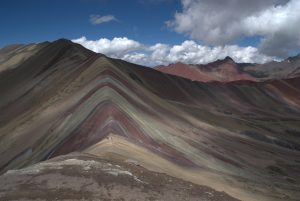
Each colour relates to a different mineral. For example, red-tinted sectors indicate iron oxide that has rusted, the iron in the rocks rusting after exposure to water in rainfall and snowfall.
- Pink: Red clay, mud, and sand mix to produce a beautiful blushing colour.
- White: This rich, loamy layer is rich in calcium carbonates like quartz and sandstone.
- Greens and blues (turquoise): Iron magnesium rocks and phyllites — a fine-grained metamorphic rock — are responsible for some of the most striking colours present.
- Earthy browns: Eroded rocks and magnesium add depth to the palette.
- Yellows: Sandstone and limestone, enriched with sulphides, create striking golden bands.
When Was Peru’s Rainbow Mountain Discovered?
Peru’s Rainbow Mountain colours were discovered around ten years ago; the exact date is unknown, but most agree it was between 2012-15 that it caught international attention. Climate change meant more snow melting higher up the Peruvian Andes, revealing Vinicunca’s full-colour repertoire to the world. Much of the mountain was covered with snow before the snow melted, meaning it was a well-kept local secret.
Rainbow Mountain is at a very high altitude of about 5,200m/17,060ft and a three-hour drive south-east of Cusco. Its lack of vegetation helps display its colours to the world. Llamas and alpacas roam the area, tended by locals of the Ausangate area.
Pre-Incans revered the mountain, calling it an Apu, a lord, or spirit of the mountain to worship. People still give offerings to this and many other mountains across the Andes.
Do People Worship Peru’s Mountain of Rainbows?
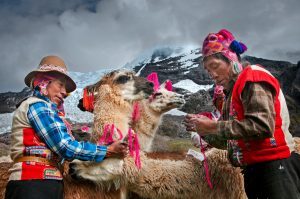
Vinicunca has a long connection with the people in the surrounding Ausangate and Cusco areas.
Before climate change melted the snow, people would carve ice from the mountain’s glaciers and transport it for use in Cusco. Nowadays, inhabitants of the area give offerings to the Apu and other mountains in the area.
What’s the Weather Like on Peru’s Rainbow Mountain?
The high altitude at Rainbow Mountain means visitors need to prepare for four seasons in one day and all weather eventualities.
Morning and evening temperatures can quickly drop below freezing. Conditions can rapidly switch from strong Andean sunshine to rain or snow.
The Peruvian Andes’ dry season is the best time to visit. April to October are the best months, with clear blue skies most likely. The shoulder months of March and November can be good, too. This weather checker may help.
December, January, and February are among the wettest months. Moreover, be prepared for fickle mountain weather, low cloud, showers, and even snow whenever you visit. And most importantly, don’t forget sun cream because the Andean sunshine is powerful.
Do I Need to Acclimatise to Visit Peru’s Rainbow Mountain?
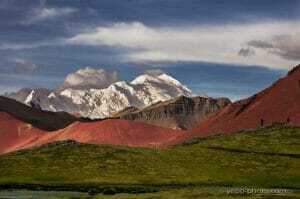
Yes, you must be well acclimatised to high altitude before visiting Peru’s Rainbow Mountain. That’s because the viewpoint lies at around 4,954m/16,253ft, which is very high.
We recommend at least four nights in Cusco or a similarly-placed location immediately before visiting the mountain, and ideally with day trips to heights above Cusco’s. Drink lots of water, eat light meals, avoid caffeine and alcohol, and drink coca tea.
The mountain is very remote, and hospitals are a long way away. Unacclimatised people may suffer from dizziness, headaches, vomiting, and shortness of breath. Severe cases may end with a requirement for oxygen and even hospitalisation.
How Can I Visit From Cusco?
There is a myriad of day tours from Cusco to Rainbow Mountain. These make for very long days, with 3-4 am starts and returning to your hotel around 8-9 pm. Many people take these tours and find themselves among a long line of trekkers, which can reduce the magic of the visit. We don’t offer these day tours for the reasons outlined.
We recommend an overnight, two-day trip, or even better, our five-day Ausangate lodge-based trek. You’ll be ahead of the crowds and perhaps have the place to yourself, increasing your chances of taking a great photograph to remember the trip.
What’s more, these longer trips help you acclimatise. As a result, that will help you arrive in good shape for a visit to Peru’s Rainbow Mountain.
Facts About Peru’s Rainbow Mountain
Now you know all about Rainbow Mountain, why not contact us and visit this fantastic place yourself. We know the best routes and tips to ensure you have the best time.
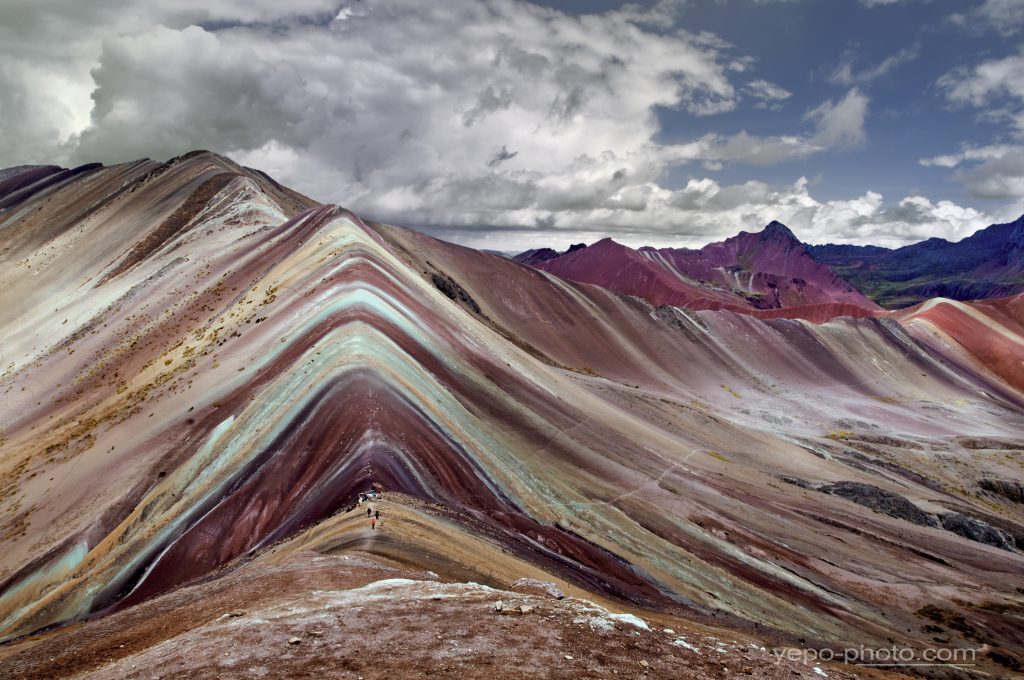


 a Tailor Made Tour
a Tailor Made Tour 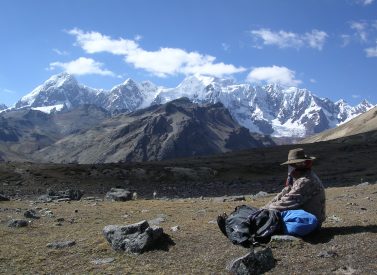


 a Group Tour
a Group Tour 